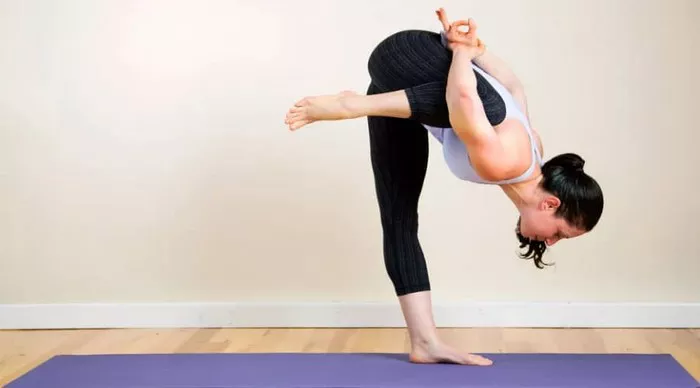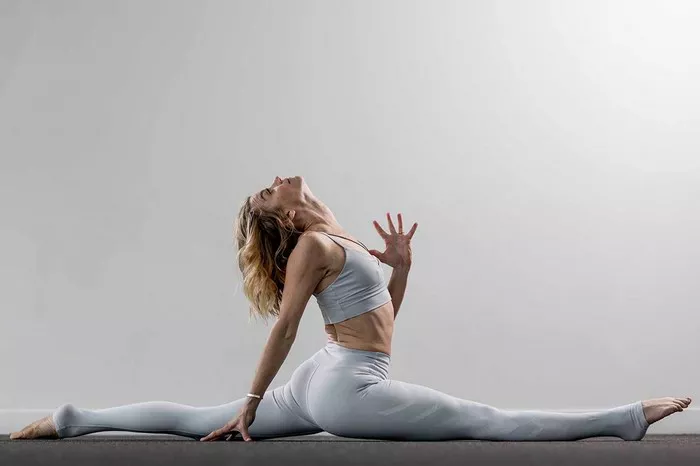Yoga, an ancient practice originating from India, is not merely a physical exercise but a holistic approach to health and well-being. One fascinating aspect of yoga is the incorporation of poses inspired by elements of nature, including animals and birds. The graceful movements of birds have long captivated human imagination, serving as inspiration for various yoga postures. In this article, we delve into the serene world of avian-inspired yoga poses, exploring their benefits and the symbolism they carry.
1. Eagle Pose (Garudasana)
Garudasana, or Eagle Pose, mimics the majestic stance of an eagle in flight. This pose enhances balance, focus, and flexibility. By crossing the arms and legs in a complex intertwining, practitioners engage multiple muscle groups, promoting strength and stability. Eagle Pose also stimulates the body’s energy channels, fostering a sense of rejuvenation and vitality.
2. Peacock Pose (Mayurasana)
Mayurasana, or Peacock Pose, embodies the grace and poise of the peacock, revered for its beauty and elegance. In this pose, the body resembles the vibrant plumage of the peacock, with the arms serving as the tail feathers. Mayurasana strengthens the arms, wrists, and core muscles while improving digestion and detoxification. It symbolizes inner strength, courage, and transformation.
3. Crow Pose (Bakasana)
Bakasana, or Crow Pose, reflects the agile and focused nature of the crow, known for its intelligence and adaptability. Balancing on the hands with the knees resting on the upper arms, practitioners cultivate core strength, concentration, and body awareness. Crow Pose also encourages mental resilience and the willingness to embrace challenges with equanimity.
4. Swan Pose (Hamsasana)
Hamsasana, or Swan Pose, embodies the elegance and grace of the swan gliding across tranquil waters. By extending one leg backward while arching the torso forward, practitioners experience a deep stretch in the hip flexors and quadriceps. Swan Pose enhances spinal flexibility, opens the heart center, and cultivates a sense of serenity and tranquility.
5. Pigeon Pose (Kapotasana)
Kapotasana, or Pigeon Pose, mirrors the gentle demeanor of the pigeon, symbolizing peace and harmony. This hip-opening posture releases tension and tightness stored in the hips and groin area, making it particularly beneficial for individuals with sedentary lifestyles or those experiencing sciatic pain. Pigeon Pose also encourages introspection and emotional release, facilitating the release of stored emotions.
6. Heron Pose (Krounchasana)
Krounchasana, or Heron Pose, evokes the long-legged grace of the heron as it stands motionless by the water’s edge. By extending one leg forward while hinging at the hips, practitioners engage the hamstrings, calves, and lower back, improving flexibility and posture. Heron Pose also promotes focus, patience, and inner stillness, inviting practitioners to embody the calmness of the heron amidst life’s challenges.
7. Rooster Pose (Kukkutasana)
Kukkutasana, or Rooster Pose, reflects the bold and assertive nature of the rooster, announcing the dawn with its crowing call. This arm-balancing posture challenges the practitioner to balance the body’s weight on the hands while keeping the legs lifted and crossed. Rooster Pose cultivates upper body strength, coordination, and confidence, empowering practitioners to rise with resilience and determination.
8. Owl Pose (Utkata Konasana)
Utkata Konasana, or Owl Pose, embodies the wisdom and insight associated with the nocturnal bird of prey. This wide-legged squatting posture strengthens the thighs, groin, and pelvic floor muscles while improving hip mobility and stability. Owl Pose also stimulates the root chakra, grounding practitioners in their physical body and fostering a sense of security and stability.
9. Flamingo Pose (Natarajasana)
Natarajasana, or Flamingo Pose, celebrates the graceful balance and elegance of the flamingo as it stands on one leg with the other lifted behind. This backbending posture stretches the shoulders, chest, and quadriceps while improving balance, concentration, and proprioception. Flamingo Pose symbolizes grace under pressure and the ability to maintain composure amidst life’s fluctuations.
10. Hummingbird Pose (Sucirandhrasana)
Sucirandhrasana, or Hummingbird Pose, embodies the delicate and precise movements of the hummingbird as it hovers effortlessly in the air. This seated twist posture stretches the spine, shoulders, and oblique muscles while stimulating the digestive organs and detoxifying the body. Hummingbird Pose encourages practitioners to approach life with lightness, agility, and adaptability, embracing change with grace and ease.
Conclusion
In conclusion, the integration of bird-inspired yoga poses into one’s practice offers not only physical benefits but also profound symbolic meanings. As we emulate the movements and qualities of these avian creatures, we align ourselves with the natural rhythms of the earth, fostering a deeper connection to ourselves and the world around us. Whether soaring like an eagle or perched like a heron, each pose invites us to embody the essence of these majestic birds, cultivating strength, balance, and inner peace on our yogic journey.























